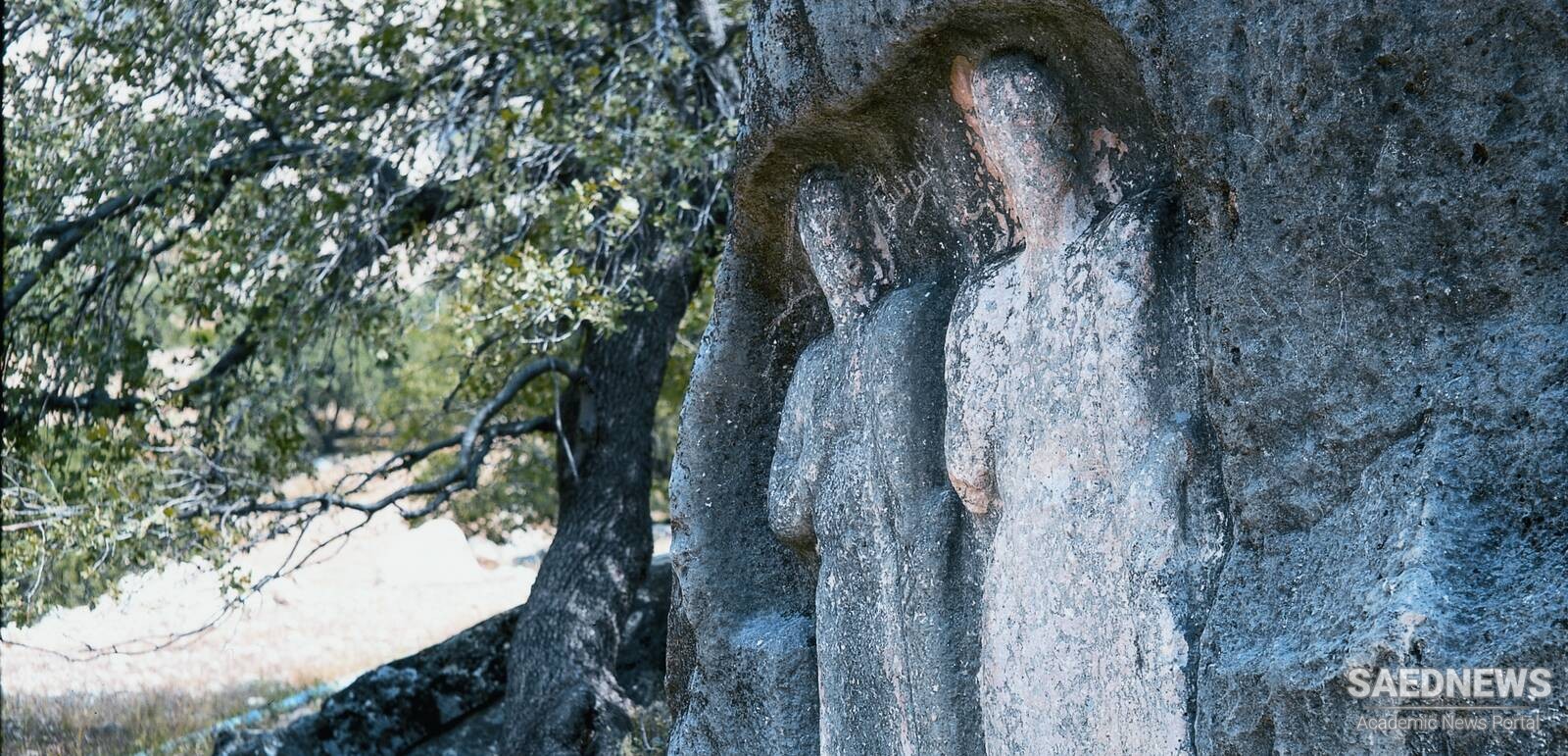It is written in Fars-Nama, a local history and geography book of Fars Province, that the name of this defile comes from the "defile of little cedars”. There are some seasonal villages near this place, for example, Abdooli, Sineh Sulak, Chal Anjir, and Zir Check. Six springs are surrounding them that irrigate the pomegranate gardens and nearly five thousand trees.
In addition to fourteen Ostudans (the place for the bones or ossuary) and a 2km paved road, there exist 5 bas-reliefs depicting the coronations of Elymais and Parthian kings in Tang-e Sulak. Bard-e Rostam or Sang-e Rostam (bas-relief of Rostam) has the images of king hunting lion, coronations, soldiers, courtiers, fire altar, and thrones with throne leg in the shape of an eagle. In front of Bard-e Rostam, another bas-relief can be found which in part has been destroyed. This also has some images demonstrating the battle of a king, bow, spear, rider, horse, and soldiers. There are some inscriptions in Pahlavi on two of them.
Just above the two rocks, there exist three other bas-reliefs with some images on them. These may belong to the third century AD. It has been said that Tang-e Sulak is similar to Taq-e Bostan and it is attributed to Sassanid Emperors such as Bahram II, Bahram III, Hormizd II, Shapur II.
Tang-e Sulak was discovered in 1841 by a Russian tourist called Dubour, and Elistan published these bas-reliefs, and Famous Iranologist, Henning, studied them. Nearly 40 Ostudans are also found Throughout Bahmai.
Fifteen kilometers to Likak city in the south of Kohgiluyeh and Boyer-Ahmad Province, a two-thousand-hectare forest exists. Wild goats, goats, and birds such as partridge, see-see partridge, common wood pigeon, rock dove, and row live there.
The vegetation of this region consists of oaks, zarbin (a type of cedar), Montpellier maple, crataegus, and medical plants like common yarrow, chives, halpeh, allium jesdanum, biarum bovei, aerva, spear thistle, fritillaries, and thymus, and some combination of zarbin and oak.


 Jinn Chimney the Artwork of Natural Forces
Jinn Chimney the Artwork of Natural Forces














































